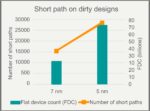You are currently viewing SemiWiki as a guest which gives you limited access to the site. To view blog comments and experience other SemiWiki features you must be a registered member. Registration is fast, simple, and absolutely free so please,
join our community today!
WP_Term Object
(
[term_id] => 159
[name] => Siemens EDA
[slug] => siemens-eda
[term_group] => 0
[term_taxonomy_id] => 159
[taxonomy] => category
[description] =>
[parent] => 157
[count] => 813
[filter] => raw
[cat_ID] => 159
[category_count] => 813
[category_description] =>
[cat_name] => Siemens EDA
[category_nicename] => siemens-eda
[category_parent] => 157
[is_post] =>
)

WP_Term Object
(
[term_id] => 159
[name] => Siemens EDA
[slug] => siemens-eda
[term_group] => 0
[term_taxonomy_id] => 159
[taxonomy] => category
[description] =>
[parent] => 157
[count] => 813
[filter] => raw
[cat_ID] => 159
[category_count] => 813
[category_description] =>
[cat_name] => Siemens EDA
[category_nicename] => siemens-eda
[category_parent] => 157
[is_post] =>
)
An animated panel discussion Design Automation Conference in June offered up a view of the state of RISC-V and open-source functional verification and a wealth of good material for a three-part blog post series.
Parts One and Two covered a range of topics from microcontroller versus more general-purpose processor versus running… Read More
You begin writing some UVM code and there are parts of the code that aren’t done yet, so you begin to use uvm_objection, guarding that code. Rich Edelman, a product engineer at Siemens doing verification debug and analysis, wrote a paper on this topic, which I just read. This blog covers the topic of objections and provides some different… Read More
Electronic systems design is filled with a wide range of tools used across IC packaging design, multi-board systems, design creation, physical implementation, electro-mechanical co-design, simulation & analysis, and new product introduction. Siemens has been offering tools in this flow for many years now, so I was able… Read More
PCB and package designers need to be concerned with Signal Integrity (SI) issues to deliver electronic systems that work reliably in the field. EDA vendors like Siemens have helped engineers with SI analysis using a simulator called HyperLynx, dating all the way back to 1992. Siemens even wrote a 56-page e-book recently, Signal… Read More
A lively panel discussion about RISC-V and open-source functional verification highlighted this year’s Design Automation Conference. Part One looked at selecting a RISC-V IP block from a third-party vendor and investigating its functional verification process.
In Part Two, moderator Ron Wilson and Contributing Editor … Read More
The annual ITC event is happening this week in San Diego as semiconductor test professionals gather from around the world to discuss their emerging challenges and new approaches, so last week I had the opportunity to get an advance look at something new from Siemens named Tessent In-System Test software. Jeff Mayer, Product Manager,… Read More
I just read an interesting white paper on functional verification of analog blocks using SV-RNM (SystemVerilog real number modeling). The content is worth the effort to read closely as it elaborates a functional verification flow for RNM matching expectations for digital logic verification, from randomization to functional… Read More
It’s a fact of life that technology marches on. Older process nodes get replaced by newer ones. As a result, ASSPs and FPGAs are obsoleted, leaving behind large system design investments that need to re-done. Since many of these obsolete designs are performing well in the target application, this re-do task can be particularly … Read More
Most of the RISC-V action at the end of June was at the RISC-V Summit Europe, but not all. In fact, a group of well-informed and opinionated experts took over the Pavilion stage at the Design Automation Conference to discuss functional verification challenges for RISC-V and open-source IP.
Technology Journalist Ron Wilson and … Read More
Improve productivity by shifting left LVS
In modern semiconductor design, technology nodes continue to shrink and the complexity and size of circuits increase, making layout versus schematic (LVS) verification more challenging. One of the most critical errors designers encounter during LVS runs are shorted nets. Identifying… Read More











